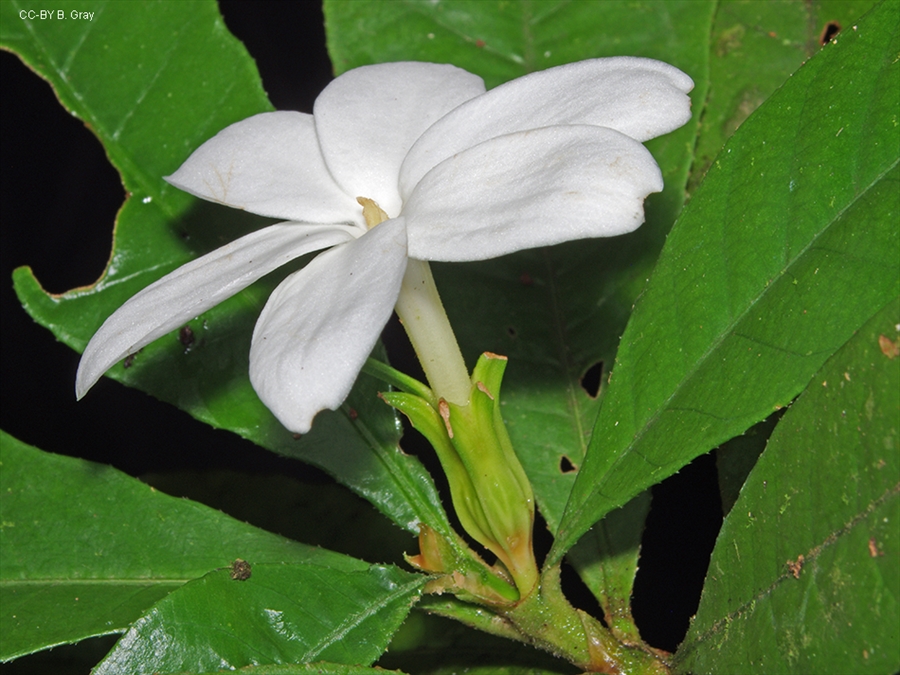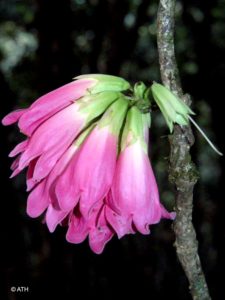
Frank Zich works as part of the Australian Tropical Herbarium (ATH)
In the plant world, flowers are organs that help plants reproduce. But like humans, flowers have a wide range of sex diversity in their community.
Flowers can be female, male, or have variations of both sexes in one flower. Some flowers can vary their sex characteristics during the course of one day. They can be male in the morning and female in the afternoon!
Frank Zich is our Collection Manager and Curator at the Australian Tropical Herbarium. He gives us the lowdown on plant sex diversity and some insights into taxonomic studies at the herbarium.
What is plant sex diversity?
Plant sex diversity influences genetic diversity. That’s important as the different combinations of alleles (different gene copies) lets populations easily adapt to environmental changes. In short, genetic diversity leads to healthier populations and a lower risk of extinction.
Having flowers with different sex characteristics encourages cross-pollination with other plants. It also prevents self-pollination and inbreeding.
But if you think plant sex diversity only occurs in exotic plants, think again. There’s one brunch mainstay described as intersex. That’s right, it’s the humble avocado.
Avocados have both male and female organs in the one flower, so they are fertile at different times of the day.
Examples of plant sex diversity
Avocados are divided into ‘A’ varieties and ‘B’ varieties. The ‘A’ varieties first enter a female phase in the morning where they receive pollen from an insect coming from a ‘B’ male flower. The female flower then closes at around midday to then open as a male phase. After that, the opposite happens. The pollen then transfers from the male flower to a female flower in the afternoon.
The ‘B’ varieties are the opposite of female varieties – they’re male in the morning and female in the afternoon.
This strategy increases the yield of avocados. More smashed avo for all!
A local example of sex diversity in plants is a native gardenia that only occurs in the rainforest of north Queensland. There are separate male plants and female plants, each with only one kind of flower (male or female). It relies on a moth to visit the flowers to transfer pollen between the two sexes to reproduce.
It’s important to note that plants have different kinds of tools to encourage pollination. For example, wind, insects and birds all transport pollen to plants. Insects and birds have also evolved to develop close relationships with plants. They rely on plants for pollen and nectar as food. Plants rely on them to maintain sexual diversity for healthy plant populations.

A female native gardenia which receives pollen from an insect. Image: B. Gray
The Australian National Herbarium (ATH) is one of the largest plant collections in the country. It provides crucial information on Australia’s native flora, including how plants sexually reproduce. Scientists here discover, describe and name new species of plants. This branch of science is called taxonomy.
What is Frank’s research?
Frank’s role at ATH is to manage the scientific collection of pressed and dried specimens of plants, lichens and fungi. He also keeps their names up-to-date, curates and databases them, and provides access to researchers. He additionally conducts taxonomic projects and contributes to the discovery and naming of new species.
The first step in species discovery is to collect specimens and then examine them through different techniques. Our researchers use microscopes to measure and examine lots of different plant parts including leaves, flowers and fruits. Researchers then compare what they find to known species recorded already in science journals.
They often take a sample of the leaves to the molecular lab to extract DNA and read its genetic code – the DNA sequence. The DNA sequence contains a vast array of information that can be used to determine the species’ place in the wider evolutionary tree.
Through this process, our researchers are able to contribute to a better understanding of the amazing plant diversity in Australia. They also gain understandings into the complex biology of our unique species. For example, these instances of plant sex diversity, their ecology and roles in the natural environment.
“My favourite species is Tecomanthe burungu, commonly called the Roaring Meg Creek trumpet vine,” Frank said.
“It is a species I was responsible for naming in 2018. It’s a climber from the rainforests of Daintree National Park in north Queensland with large pink trumpet-shaped flowers.
“I chose the species name ‘burungu’ in consultation with Eastern Kuku Yalanji Traditional Owners of the country it is found on.
“The name refers to the place where one of the populations is found,” he said.

Tecomanthe burungu, a flower Frank was responsible for naming in 2018
Biodiversity: The Rainbow Revolution
Diversity is important to Frank. Working in Cairns, he is surrounded by the wet tropics rainforest with high plant diversity. He’s also close to the Australian savanna where there is a lot of species discovery work to do.
“It’s really exciting to be based in northern Australia where there is such a lot of biodiversity. I’m glad to be back in the tropics,” Frank said.
But wanting diversity isn’t restricted to research. Greater diversity also ensures a better future through people and thinking.
This year, Frank will be part of our Sydney Gay and Lesbian Mardi Gras Parade float. He identifies as a cis-male gay person.
Our theme – Biodiversity: The Rainbow Revolution – celebrates the biodiversity of plant and animal life and the diversity of our rainbow communities.
“I’m pleased to be part of the diverse group represented in the float and this organisation for the past 30 years,” Frank said.
“I’m very proud of CSIRO. I think we’re doing a great job in being clear about celebrating and embracing diversity.”
The Australian Tropical Herbarium is a joint venture between CSIRO, Australian and Queensland Governments and James Cook University. The Australian National Herbarium is also part of the Centre for Australian National Biodiversity Research. It is a joint venture between Parks Australia’s Australian National Botanic Gardens and CSIRO.


23rd February 2020 at 8:48 pm
Love your work Frank.
Hx
20th February 2020 at 12:38 pm
That is so interesting about flower sexuality. It makes sense. I am very interested in painting native plants which I do as a hobby. I marvel at the beauty of the beautiful tiny native plants we have in this amazing country. I have painted the threatened plants of the Cumberland Plains woodland in western Sydney, possibly the most most densely populated region in Australia. My rnvironment group the Blacktown and District Environment printed a booklet of local endemic native plants that people can grow in their gardens in order to save them. I would like to email some of the pictures of my botanical art to you. Do you have an email?